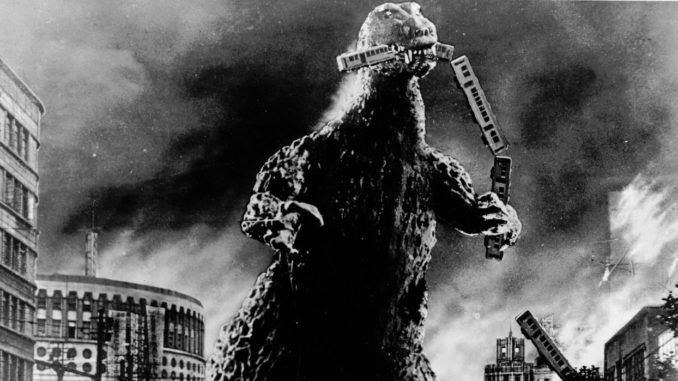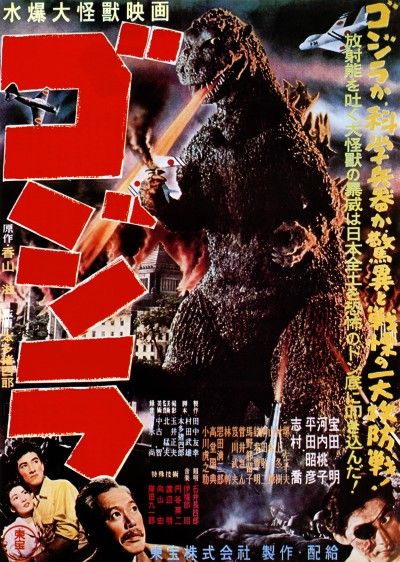
Rating: C
Dir: Ishirō Honda
Star: Akira Takarada, Momoko Kōchi, Akihiko Hirata, Takashi Shimura
I suspect I feel about this movie a little bit like I do about the original Night of the Living Dead. By which I mean, it’s a groundbreaking entry, which deserves respect on that basis. Yet the concept has been done better, any number of times since, not least by the same people. You certainly cannot knock what may be, depending on your precise definition, the longest-running movie franchise. Right from the start, the basic elements we still see today in Godzilla Minus One are set up. Actually, in terms of overall tone, Minus One may be the closest to matching this original’s darkness and sense of a nation, just coming out of a self-inflicted disaster, being hammered by another one.
However, those “basic elements” also include a couple of major problems which have plagued far too many of the entries since, to varying degrees. In particular, there’s a lot less of the monster than you want, and instead, you get too much ill-conceived and poorly-executed human drama. I had previously only seen the Raymond Burr-enhanced version, and blamed any dramatic problems on those changes. Nope. The original Japanese version is just as bad. I do not care one jot for coastguard Hideto Ogata (Takarada), his nurse fiancée Emiko Yamane (Kōchi) or their impending marriage. Every time those nuptials were brought up, I had to suppress an urge to yell at the screen, “GIANT MONSTER ATTACKING JAPAN! FOCUS, PEOPLE!”
 Big G himself barely shows up in the first half, limited to poking his head over a ridge on Odo Island, in a scene which is worryingly unimpressive. I will say, the main rampage through Tokyo is very well-executed, especially considering the time. This came out the same year as Them!, which nailed the dramatic elements, before swinging and missing badly on the monster effects: the reverse is true here. It was also interesting to realize that, unlike the giant ants in Them!, radiation does not cause Godzilla. The nuclear tests simply freed the already existing creature from its deep-sea lair, or perhaps pissed G off by destroying its territory. Japan is depicted as an innocent bystander, who happens to be in the way.
Big G himself barely shows up in the first half, limited to poking his head over a ridge on Odo Island, in a scene which is worryingly unimpressive. I will say, the main rampage through Tokyo is very well-executed, especially considering the time. This came out the same year as Them!, which nailed the dramatic elements, before swinging and missing badly on the monster effects: the reverse is true here. It was also interesting to realize that, unlike the giant ants in Them!, radiation does not cause Godzilla. The nuclear tests simply freed the already existing creature from its deep-sea lair, or perhaps pissed G off by destroying its territory. Japan is depicted as an innocent bystander, who happens to be in the way.
This is also an approach about which I have qualms: turning the nation into the role of a victim. This came out only nine years after the end of World War II, which in this theatre was largely the result of Japanese aggression. Millions were killed in the name of the Emperor, and war crimes committed which were, arguably, as terrible as those carried out by the Nazis (look up Unit 731). You didn’t see Germany making films playing the “poor me” card in the early fifties, and this feels too soon – another benefit of Minus One, seventy years later. Though even now, Japan has not fully accepted responsibility. Certainly, in 1954 I can imagine the residents of Nanking watching this and cheering Godzilla on, a righteous infliction of retribution manifested by an appropriate agent. Personified in this case by an ‘orrible lizard…
